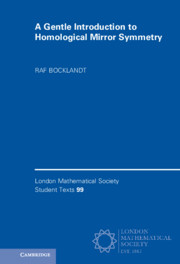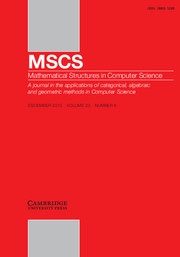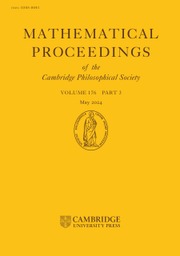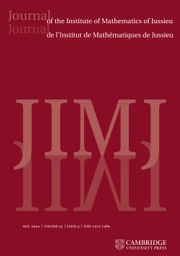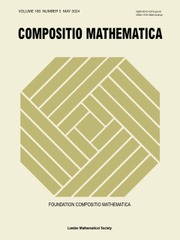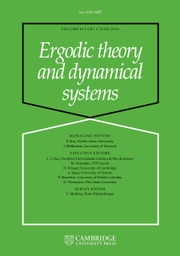A Gentle Introduction to Homological Mirror Symmetry
$51.99 ( ) USD
Part of London Mathematical Society Student Texts
- Author: Raf Bocklandt, Universiteit van Amsterdam
- Date Published: August 2021
- availability: This ISBN is for an eBook version which is distributed on our behalf by a third party.
- format: Adobe eBook Reader
- isbn: 9781108644112
Find out more about Cambridge eBooks
$
51.99 USD
( )
Adobe eBook Reader
Other available formats:
Paperback, Hardback
Looking for an examination copy?
If you are interested in the title for your course we can consider offering an examination copy. To register your interest please contact [email protected] providing details of the course you are teaching.
-
Homological mirror symmetry has its origins in theoretical physics but is now of great interest in mathematics due to the deep connections it reveals between different areas of geometry and algebra. This book offers a self-contained and accessible introduction to the subject via the representation theory of algebras and quivers. It is suitable for graduate students and others without a great deal of background in homological algebra and modern geometry. Each part offers a different perspective on homological mirror symmetry. Part I introduces the A-infinity formalism and offers a glimpse of mirror symmetry using representations of quivers. Part II discusses various A- and B-models in mirror symmetry and their connections through toric and tropical geometry. Part III deals with mirror symmetry for Riemann surfaces. The main mathematical ideas are illustrated by means of simple examples coming mainly from the theory of surfaces, helping the reader connect theory with intuition.
Read more- Self-contained and accessible introduction to homological mirror symmetry, a large and complicated subject that is difficult for beginners to grasp
- Key concepts are illustrated with simple examples to help the reader to understand the theory without being overwhelmed with technical details
- Offers three independent perspectives on this multi-faceted subject
Reviews & endorsements
'Each chapter concludes with a few exercises, and great care has been taken to use notation and terminology in a consistent way. That must have taken considerable effort and it greatly increases the value of the book because there are many examples in mirror symmetry of different writers using the same words to mean different, often subtly different, things.' G. K. Sankaran, MathSciNet
See more reviews‘The book under review provides an introduction to homological mirror symmetry which is accessible to graduate students in mathematics. In particular, it includes a great amount of background material, and motivational sections. Among the reason it is so approachable is the style …’ Hulya Arguz, zbMATH
Customer reviews
Not yet reviewed
Be the first to review
Review was not posted due to profanity
×Product details
- Date Published: August 2021
- format: Adobe eBook Reader
- isbn: 9781108644112
- availability: This ISBN is for an eBook version which is distributed on our behalf by a third party.
Table of Contents
Part I. To A∞ and Beyond:
1. Categories
2. Cohomology
3. Higher products
4. Quivers
Part II. A Glance through the Mirror:
5. Motivation from physics
6. The A-side
7. The B-side
8. Mirror symmetry
Part III. Reflections on Surfaces:
9. Gluing
10. Grading
11. Stabilizing
12. Deforming
References
Index.
Sorry, this resource is locked
Please register or sign in to request access. If you are having problems accessing these resources please email [email protected]
Register Sign in» Proceed
You are now leaving the Cambridge University Press website. Your eBook purchase and download will be completed by our partner www.ebooks.com. Please see the permission section of the www.ebooks.com catalogue page for details of the print & copy limits on our eBooks.
Continue ×Are you sure you want to delete your account?
This cannot be undone.
Thank you for your feedback which will help us improve our service.
If you requested a response, we will make sure to get back to you shortly.
×
